It looks like you're using an Ad Blocker.
Please white-list or disable AboveTopSecret.com in your ad-blocking tool.
Thank you.
Some features of ATS will be disabled while you continue to use an ad-blocker.
share:
reply to post by WarminIndy
Yes i think that's pretty much it, what is involved is mastery over the Western and Eastern horizons, and their lion guardians (sphinxes), the mastery over the serpent such that the two are intertwined as one, and thus death is overcome.
These are some other early seals from Elam on this theme, were the rustic Divine couple are seen;

These are very little known or appreciated, but important in my view, of course as these are from the earliest period of civilization it leads to the question of how long these ritual practise had existed prior to that, and also why they steadily went into decline and re-interpretation, it's just the case that as urban life developed and seals became an aspect of this a great deal of information was then recorded on them giving us insight.

This is later Persian, but the principles are the same.
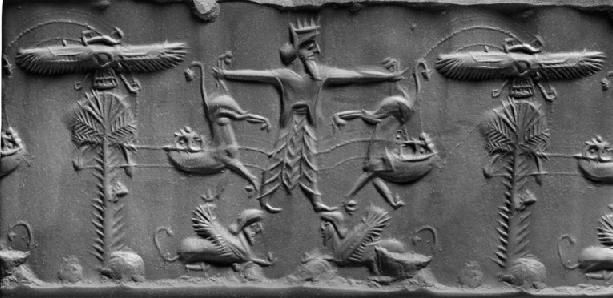
Yes i think that's pretty much it, what is involved is mastery over the Western and Eastern horizons, and their lion guardians (sphinxes), the mastery over the serpent such that the two are intertwined as one, and thus death is overcome.
These are some other early seals from Elam on this theme, were the rustic Divine couple are seen;

These are very little known or appreciated, but important in my view, of course as these are from the earliest period of civilization it leads to the question of how long these ritual practise had existed prior to that, and also why they steadily went into decline and re-interpretation, it's just the case that as urban life developed and seals became an aspect of this a great deal of information was then recorded on them giving us insight.

This is later Persian, but the principles are the same.

edit on 24-10-2013 by Kantzveldt because: (no reason given)
reply to post by Kantzveldt
The bottom seals are Zoroastrian, as Ahura Mazda is pictured not only once, but twice. That seems to be reinforcing the notion of Ahura Mazda. This guy is a king and has subdued lions. He must have been a pretty important guy. Perhaps his story is told in the Avestas, if he were a legend. If he were just a human king, then it probably is someone before Nebuchadnezzar, Darius and Cyrus.
The only famous kings from the time before that seem to be covered in myth. As this guy is clearly Zoroastrian, I thought I might look up who he might be. Legendary Aryan King List
And I looked up Persian Palm trees, and there is the Ezmirghan area, it is now a national park. Plenty of palm trees to show. Ezmirghan is in central Iran.
The bottom seals are Zoroastrian, as Ahura Mazda is pictured not only once, but twice. That seems to be reinforcing the notion of Ahura Mazda. This guy is a king and has subdued lions. He must have been a pretty important guy. Perhaps his story is told in the Avestas, if he were a legend. If he were just a human king, then it probably is someone before Nebuchadnezzar, Darius and Cyrus.
The only famous kings from the time before that seem to be covered in myth. As this guy is clearly Zoroastrian, I thought I might look up who he might be. Legendary Aryan King List
And I looked up Persian Palm trees, and there is the Ezmirghan area, it is now a national park. Plenty of palm trees to show. Ezmirghan is in central Iran.
edit on 10/24/2013 by WarminIndy because: (no reason given)
reply to post by Kantzveldt
If it is possible, as I had suggested on another thread, that all the religion came from Harappa, then there was a book written that described India, called Indica by Ctesias. He was a Greek physician in the court of Artaxerxes II.
In his book, which seems ridiculous in some claims, and yet spot on in others he describes India as
Since these sphinx can be considered manticores, perhaps it is pointing back to their origins?
If it is possible, as I had suggested on another thread, that all the religion came from Harappa, then there was a book written that described India, called Indica by Ctesias. He was a Greek physician in the court of Artaxerxes II.
In his book, which seems ridiculous in some claims, and yet spot on in others he describes India as
The Indus river is identified, and described as being up to twenty miles across.
India is heavily populated, more than the rest of the world combined
Indian elephants are first described
While monkeys were well known in the Mediterranean, unusual types are described for India, including a tiny breed with a six foot long tail
Indian dogs the size of lions
Gigantic mountains
The martikhora (manticore), a red creature with a face like a man's, three rows of teeth, and a scorpion's sting on its tail.
Detailed descriptions of Indian customs, proclaiming them very just and honorable.
Short, black men called pygmies, who live in the middle of India.
Palm and date trees three times the size of those in Babylon
Since these sphinx can be considered manticores, perhaps it is pointing back to their origins?
Kantzveldt
Those are depictions of the Master and Mistress of the Hunt/Animals similar to those found elsewhere.
www.louvre.fr...
This paper is of interest...
www.ieiop.csic.es...
The Master is less often spoken of once civilisation/fixed settlements are established, but at the lowest strata of Knossos a depiction much like the one you posted was found, with both side by side. Obviously, the rise of pastorialism, which was a largely male pursuit, explains why she persisted in mythology, while he transmuted to a more centrally economic, stable role. The more wild Mistress was still retained, hunting still supplemented the diet, though largely through trade rather than direct participation.
reply to post by KilgoreTrout
I'm not at all sure that term is the best, the concern seems with domesticated animals and cultivation, bridging the divide between mankind and nature, not hunting down the wee beasties.
Inanna was from earliest times a horned cattle Goddess, but in association with breeding huts and the establishment of herds and dairy houses, likewise Dumuzid a horned shepherd, gatherer of wild honey and charmer of serpents, in order to also bridge the gulf between life and death, the spirit world.
The romantic couple also bridge the divide between gender and thus are also concerned with pro-creation, so for me the cult was with regards to harmonious living and assimilation within nature and working with it rather than against, and also enjoying the good produce that comes of this.
reply to post by WarminIndy
I don't think it can be considered all religion came form Harappa, the fundamentals of Near Eastern religion can be traced back some 6,000 years or so earlier in the core Neolithic region.
I'm not at all sure that term is the best, the concern seems with domesticated animals and cultivation, bridging the divide between mankind and nature, not hunting down the wee beasties.
Inanna was from earliest times a horned cattle Goddess, but in association with breeding huts and the establishment of herds and dairy houses, likewise Dumuzid a horned shepherd, gatherer of wild honey and charmer of serpents, in order to also bridge the gulf between life and death, the spirit world.
The romantic couple also bridge the divide between gender and thus are also concerned with pro-creation, so for me the cult was with regards to harmonious living and assimilation within nature and working with it rather than against, and also enjoying the good produce that comes of this.
reply to post by WarminIndy
I don't think it can be considered all religion came form Harappa, the fundamentals of Near Eastern religion can be traced back some 6,000 years or so earlier in the core Neolithic region.
edit on 24-10-2013 by Kantzveldt because: (no reason given)
Kantzveldt
I'm not at all sure that term is the best, the concern seems with domesticated animals and cultivation, bridging the divide between mankind and nature, not hunting down the wee beasties.
Inanna was from earliest times a horned cattle Goddess, but in association with breeding huts and the establishment of herds and dairy houses, likewise Dumuzid a horned shepherd, gatherer of wild honey and charmer of serpents, in order to also bridge the gulf between life and death, the spirit world.
The romantic couple also bridge the divide between gender and thus are also concerned with pro-creation, so for me the cult was with regards to harmonious living and assimilation within nature and working with it rather than against, and also enjoying the good produce that comes of this.
Ah, it's romance you're after. Can't help you there I'm afraid, I'm not one for ribbons and bows myself
It is a pity you didn't read the paper that I linked, that would have helped with the morphology, but the Mistress and the Master preceed, and have a syncretic relationship to the later settlement deities as I explained. But yes, they are all about harmony, and that was very much the 'hunting' experience prior to us becoming detached from the source of our food. The Mistress and the Master served as intermediaries with the spirits of the forest, plain, mountains...or whatever was the natural environment at that time and were offered appeasement accordingly. The hunter thanked the animal that it had killed for giving itself as food. These rituals are still practiced, not just by extant hunter-gatherers, but also in rural regions that still rely on hunting as a supplement to the subsistence agriculture that they practice. My very jammy brother, while staying with a community of Lepcha people in Sikkim was invited to join the men in their Spring ritual, and though they may have adopted some modern tools, they still make the same ritual meal which they share with the forest and mountain spirits, as well as the deities of the hunt.
With settlement, and cities, a withdrawal from nature, the rituals of the hunt were transposed into the warrior class and rituals, we can see this much later with the Mithriac Cult of Rome, that was utilised as a means of assimilating locals into the military. We were hunting for many, many hundreds of years longer than we have been rearing animals for meat, not even close to breaking even on that one yet.
So I am sorry, but in the beginning, paleolithic through Mesolithic, it was all about hunting down the wee beasties, but very much about doing so in a balanced way that reflected a deep understanding of the symbient relationship between man and the food that we eat...the produce of wild bees included, if not more so, given it's multitude of uses, and great scarcity.
reply to post by KilgoreTrout
No i read it because Qudshu is very much of interest to me with regards to the Mandaean Ruha Qudshu tradition, but the connection to nature in such a case would be much deeper than establishing harmonious relationship, all natural life on Earth would be expression of the spirit of Ruha in such Theology.
The important relationship that is established then is the romantic one between the shepherd and the Goddess that personifies the natural terrestrial spirits, he will no longer hunt her but work in conjunction with, thus there is a clear ideological break from the traditions of the past, from the Neolithic onward.
No i read it because Qudshu is very much of interest to me with regards to the Mandaean Ruha Qudshu tradition, but the connection to nature in such a case would be much deeper than establishing harmonious relationship, all natural life on Earth would be expression of the spirit of Ruha in such Theology.
The important relationship that is established then is the romantic one between the shepherd and the Goddess that personifies the natural terrestrial spirits, he will no longer hunt her but work in conjunction with, thus there is a clear ideological break from the traditions of the past, from the Neolithic onward.
reply to post by WarminIndy
INteresting snippet from Wikip to think about in terms of your Aryan/Aries theory....
"There are various methods of calculating the length of an astrological age. In sun-sign astrology, the first sign is Aries, followed by Taurus, Gemini, Cancer, Leo, Virgo, Libra, Scorpio, Sagittarius, Capricorn, Aquarius, and Pisces, whereupon the cycle returns to Aries and through the zodiacal signs again. Astrological ages, however, proceed in the opposite direction ("retrograde" in astronomy). Therefore, the Age of Aquarius follows the Age of Pisces.[1]"
By this reasoning (which I have done next to no research to corroborate): If we have just been through Aquarius ["Astrologers maintain that an astrological age is a product of the earth's slow precessional rotation and lasts for 2,150 years, on average."]-Wikip... then the previous 2150 years were the Age of Pisces, and previous to that Aries. So the Age of Aries would have been BC4450 to BC2300 (or 6500 - 4300 years ago).
Not sure if that means anything to you, but piqued an interest in my mind....
EDIT Apparently we have not 'just been' through Aquarius but are in the middle of it, so I'm sorry if you bothered yourself to read the above, but it is pretty worthless conjecture and irrelevant
INteresting snippet from Wikip to think about in terms of your Aryan/Aries theory....
"There are various methods of calculating the length of an astrological age. In sun-sign astrology, the first sign is Aries, followed by Taurus, Gemini, Cancer, Leo, Virgo, Libra, Scorpio, Sagittarius, Capricorn, Aquarius, and Pisces, whereupon the cycle returns to Aries and through the zodiacal signs again. Astrological ages, however, proceed in the opposite direction ("retrograde" in astronomy). Therefore, the Age of Aquarius follows the Age of Pisces.[1]"
By this reasoning (which I have done next to no research to corroborate): If we have just been through Aquarius ["Astrologers maintain that an astrological age is a product of the earth's slow precessional rotation and lasts for 2,150 years, on average."]-Wikip... then the previous 2150 years were the Age of Pisces, and previous to that Aries. So the Age of Aries would have been BC4450 to BC2300 (or 6500 - 4300 years ago).
Not sure if that means anything to you, but piqued an interest in my mind....
EDIT Apparently we have not 'just been' through Aquarius but are in the middle of it, so I'm sorry if you bothered yourself to read the above, but it is pretty worthless conjecture and irrelevant
edit on 26-10-2013 by f4andHALFtoads because: (no reason given)
Kantzveldt
No i read it because Qudshu is very much of interest to me with regards to the Mandaean Ruha Qudshu tradition, but the connection to nature in such a case would be much deeper than establishing harmonious relationship, all natural life on Earth would be expression of the spirit of Ruha in such Theology.
Those Mandaeans are a highly elitist bunch aren't they? Anyway, I am not sure what you mean really, but in the Mandaean context it provides an interesting example of how the morphology works as the society gets more complex and removed from nature. Once religious ritual moved into Fertility cults with the emergence of the Neolithic, you then get the Earth Mother figure, as exampled by Ruha, becoming increasingly negatively perceived, she is still necessary, in order to gestate the seed and produce new life, but her spiritual-wisdom aspect if rejected, as 'evil'. The Earth becomes merely a receptacle for the corpse, not as a conduit of the afterlife and a source of renewal. In such a way, not only is she removed from the human afterlife, but her role in providing the plants with spirituality are all but removed too. The Mandaeans are quite unique in retaining her, and in some ways feeling sorry for the fact that she is left with only materialistic properties, and recognising her bereavement from the power of wisdom giving. Kind of tragic.
Kantzveldt
The important relationship that is established then is the romantic one between the shepherd and the Goddess that personifies the natural terrestrial spirits, he will no longer hunt her but work in conjunction with, thus there is a clear ideological break from the traditions of the past, from the Neolithic onward.
Good golly...why was he hunting her? You have some interesting kinks Missy! I wouldn't really describe the Shepherd/Goddess relationship as romantic, domestic yes, but he is more of the Earthly intermediary of the God. He cleaves her vulva with his plough after all...not my idea of pillow talk. The Shepherd, as human emissary serves more of a Heirogamus role, 'Tupping' for God, and directing the semen/seed for the best results. Much later, under the Hittites, it becomes even more functional, and the Shepherd is sacrificed, giving his blood to appease the Goddess and make her more receptive to fertilisation. So while previously, the God and Goddess worked in equality to produce the natural world, engaging in the creative act as equals, God needs a helping hand to 'hit the spot', hence the Shepherd as intermediary, or tupper. Much as plant cultivars often need help with pollination, domestic animals need tupping, the soil needs fertiliser...the development of fertility cults reflect that need and apply ritual accordingly. That they dress it up in ribbons and bows, is perfectly understandable really, and the storytelling that the poems provide are mnemonic tools for ensuring that everyone knew what they had to do to help things along. Interestingly, the Sumerian word for shepherd, SIPA, is interchangeable with 'king' and the King was seen as the shepherd of his people, SIPA also means 'stretched horn' or erect penis. In Fertility cults, much like in domestication, the female assumes a much more passive role in the creative process...the Goddess is depicted as not liking that all that much...just as the Ewe might put up resistence...she does too...and good on her, it's a pity it is taking us so long to understand that she had a point.
Sooo...I am going to stick with Master/Mistress of the Animals...the Hunt thing seems to be causing too much confusion, and it is largely dependent on locale...all things considered, given the equality of the images, I would still go with the ones I highlighted as referring to them, not your shepherd and Goddess...which is a much more facilitating relationship, rather than an joint act of creativity. The Mistress becomes, later, more synonymous with the moon...but the Master is harder to pinpoint evolutionary wise, so study has avoided him largely, but in my opinion, he can be equated to some extent with the Shepherd, but to do so, relegates his divinity, so he is more usurped by the Shepherd.
He varies, stylistically, in time and place, but the basic themes, in keeping with those you posted, which are largely environmentally dependent, remain constant...
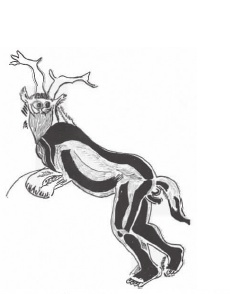
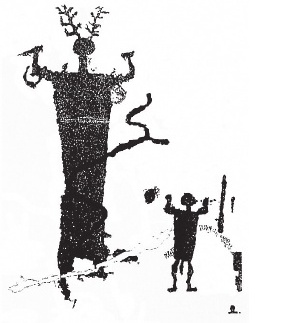
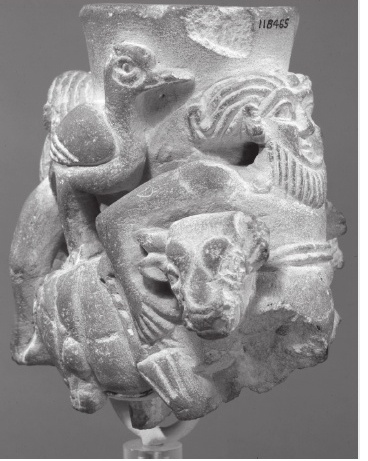
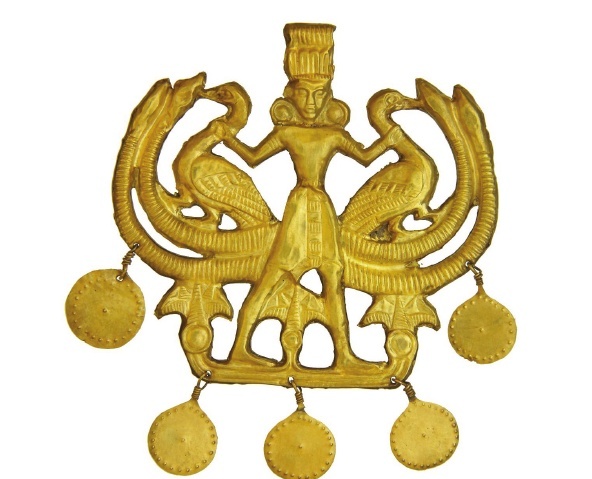
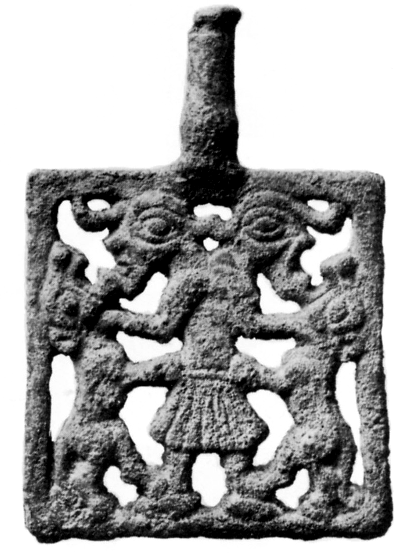
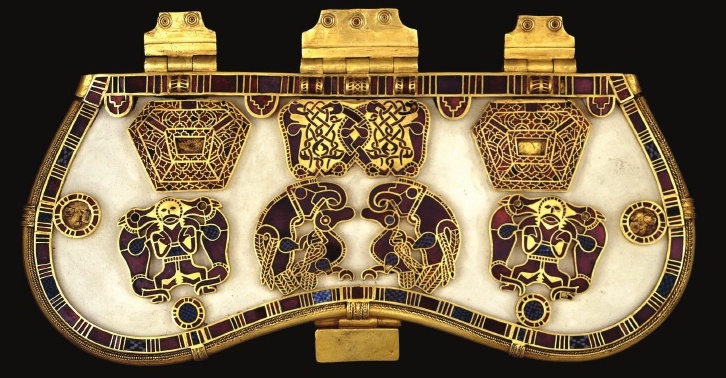
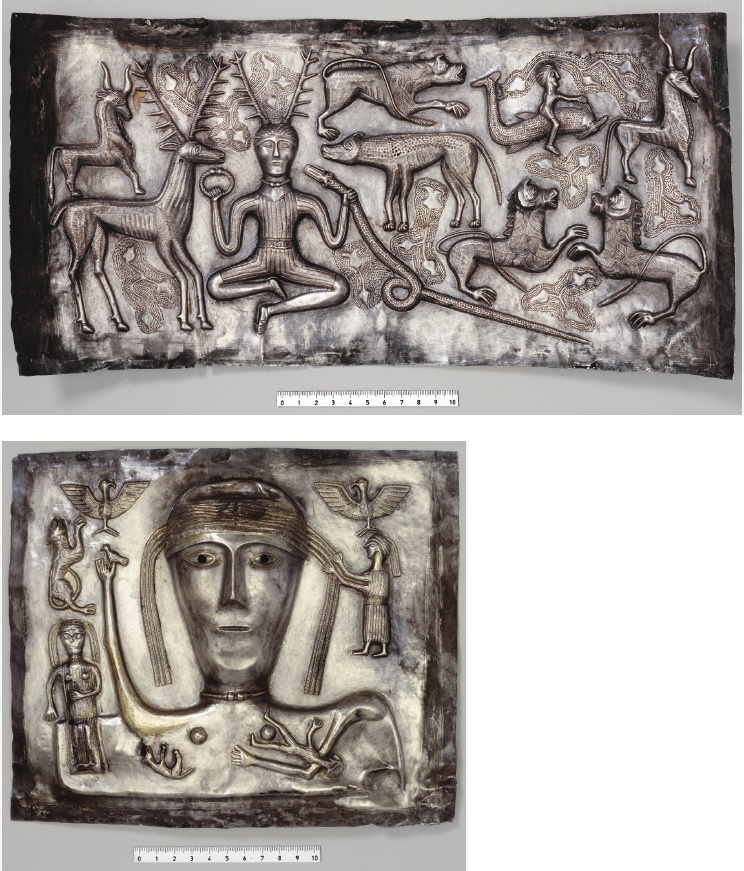
reply to post by KilgoreTrout
It's their Doctrinal position and doesn't reflect on their character, Ruha is the intermediary spirit between the Nether regions and the Celestial, that which informs the terrestrial. As such darkness was understood as present within her, as she was brought up from the Underworld to facilitate creation upon Earth.
It is seen as that part which is disconnected from the Celestial spirit, that is unknowing, that is separate, that constitutes the individual psyche ever in the dark.
It isn't just this spirit that permeates the Earth that is seen as an isolate, the sundry bodies of the solar system and their spiritual archetypes are also cast in the same boat as Ruha, indeed they are as a reflection of her in terms of their spiritual interpretations, these ever being based on the terrestrial perspective.
Everything actually indicates that at least from the Neolithic onward the Earth Goddess type was understood as emerging from the depths of darkness and was a personification of it.
He was hunting her in the sense that all isolate spirits that constitute the individual, whether animal or human, are an expression of Ruha, and that in ending life and returning that spirit to the Celestial source she has effectively been removed, thus hunting diminishes her whilst pro-creation increases.
I do have a very broad perspective with regards to what constitutes 'romance', but in Sumeria the 'tupping' was seen as the interest of Inanna and her sukkal Nin-subur, pro-creation increases her, the breeding of domesticated livestock, the Shepherd only watched over them on her behalf, this with regards to the people also as King (of Uruk) as you say.
The constellation Orion, Sipa-zianna,(true shepherd of Anu) was the astral manifestation of Nin-subur as the true shepherdess that reflected not only the nature of Inanna but also that of Celestial Anu and was seen as sitting upon his Earthly throne, and thus effectively as running the Universe, this role though the Akkadians thought should be masculine and introduced Pap-sukkal as a variant.
She was also understood as Ul Gi, a 'Black Star' and thus not easily seen.
Wiggerman on Nin-subur
The parents of Inanna were the Moon God and Goddess, the spirit play in black and white, now you see it now you don't, the shepherd Dumuzid was a son of Enki that creates form in which the spirit resides, that has the right to partake of that substance, the extent of their romance is such that it unites the entire Sumerian Pantheon, which tends to behave like the factions in Romeo and Juliet.
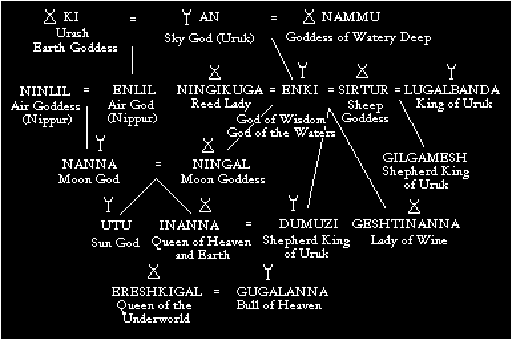
Those Mandaeans are a highly elitist bunch aren't they? Anyway, I am not sure what you mean really, but in the Mandaean context it provides an interesting example of how the morphology works as the society gets more complex and removed from nature. Once religious ritual moved into Fertility cults with the emergence of the Neolithic, you then get the Earth Mother figure, as exampled by Ruha, becoming increasingly negatively perceived, she is still necessary, in order to gestate the seed and produce new life, but her spiritual-wisdom aspect if rejected, as 'evil'. The Earth becomes merely a receptacle for the corpse, not as a conduit of the afterlife and a source of renewal. In such a way, not only is she removed from the human afterlife, but her role in providing the plants with spirituality are all but removed too. The Mandaeans are quite unique in retaining her, and in some ways feeling sorry for the fact that she is left with only materialistic properties, and recognising her bereavement from the power of wisdom giving. Kind of tragic.
It's their Doctrinal position and doesn't reflect on their character, Ruha is the intermediary spirit between the Nether regions and the Celestial, that which informs the terrestrial. As such darkness was understood as present within her, as she was brought up from the Underworld to facilitate creation upon Earth.
It is seen as that part which is disconnected from the Celestial spirit, that is unknowing, that is separate, that constitutes the individual psyche ever in the dark.
It isn't just this spirit that permeates the Earth that is seen as an isolate, the sundry bodies of the solar system and their spiritual archetypes are also cast in the same boat as Ruha, indeed they are as a reflection of her in terms of their spiritual interpretations, these ever being based on the terrestrial perspective.
Everything actually indicates that at least from the Neolithic onward the Earth Goddess type was understood as emerging from the depths of darkness and was a personification of it.
Good golly...why was he hunting her? You have some interesting kinks Missy! I wouldn't really describe the Shepherd/Goddess relationship as romantic, domestic yes, but he is more of the Earthly intermediary of the God. He cleaves her vulva with his plough after all...not my idea of pillow talk. The Shepherd, as human emissary serves more of a Heirogamus role, 'Tupping' for God, and directing the semen/seed for the best results. Much later, under the Hittites, it becomes even more functional, and the Shepherd is sacrificed, giving his blood to appease the Goddess and make her more receptive to fertilisation. So while previously, the God and Goddess worked in equality to produce the natural world, engaging in the creative act as equals, God needs a helping hand to 'hit the spot', hence the Shepherd as intermediary, or tupper. Much as plant cultivars often need help with pollination, domestic animals need tupping, the soil needs fertiliser...the development of fertility cults reflect that need and apply ritual accordingly. That they dress it up in ribbons and bows, is perfectly understandable really, and the storytelling that the poems provide are mnemonic tools for ensuring that everyone knew what they had to do to help things along. Interestingly, the Sumerian word for shepherd, SIPA, is interchangeable with 'king' and the King was seen as the shepherd of his people, SIPA also means 'stretched horn' or erect penis. In Fertility cults, much like in domestication, the female assumes a much more passive role in the creative process...the Goddess is depicted as not liking that all that much...just as the Ewe might put up resistance...she does too...and good on her, it's a pity it is taking us so long to understand that she had a point. xt
He was hunting her in the sense that all isolate spirits that constitute the individual, whether animal or human, are an expression of Ruha, and that in ending life and returning that spirit to the Celestial source she has effectively been removed, thus hunting diminishes her whilst pro-creation increases.
I do have a very broad perspective with regards to what constitutes 'romance', but in Sumeria the 'tupping' was seen as the interest of Inanna and her sukkal Nin-subur, pro-creation increases her, the breeding of domesticated livestock, the Shepherd only watched over them on her behalf, this with regards to the people also as King (of Uruk) as you say.
The constellation Orion, Sipa-zianna,(true shepherd of Anu) was the astral manifestation of Nin-subur as the true shepherdess that reflected not only the nature of Inanna but also that of Celestial Anu and was seen as sitting upon his Earthly throne, and thus effectively as running the Universe, this role though the Akkadians thought should be masculine and introduced Pap-sukkal as a variant.
She was also understood as Ul Gi, a 'Black Star' and thus not easily seen.
Wiggerman on Nin-subur
Sooo...I am going to stick with Master/Mistress of the Animals...the Hunt thing seems to be causing too much confusion, and it is largely dependent on locale...all things considered, given the equality of the images, I would still go with the ones I highlighted as referring to them, not your shepherd and Goddess...which is a much more facilitating relationship, rather than an joint act of creativity. The Mistress becomes, later, more synonymous with the moon...but the Master is harder to pinpoint evolutionary wise, so study has avoided him largely, but in my opinion, he can be equated to some extent with the Shepherd, but to do so, relegates his divinity, so he is more usurped by the Shepherd.
He varies, stylistically, in time and place, but the basic themes, in keeping with those you posted, which are largely environmentally dependent, remain constant...
The parents of Inanna were the Moon God and Goddess, the spirit play in black and white, now you see it now you don't, the shepherd Dumuzid was a son of Enki that creates form in which the spirit resides, that has the right to partake of that substance, the extent of their romance is such that it unites the entire Sumerian Pantheon, which tends to behave like the factions in Romeo and Juliet.

edit on 27-10-2013 by Kantzveldt because: (no reason given)
new topics
-
Maestro Benedetto
Literature: 24 minutes ago -
Is AI Better Than the Hollywood Elite?
Movies: 32 minutes ago -
Las Vegas UFO Spotting Teen Traumatized by Demon Creature in Backyard
Aliens and UFOs: 4 hours ago -
2024 Pigeon Forge Rod Run - On the Strip (Video made for you)
Automotive Discussion: 4 hours ago -
Gaza Terrorists Attack US Humanitarian Pier During Construction
Middle East Issues: 5 hours ago -
The functionality of boldening and italics is clunky and no post char limit warning?
ATS Freshman's Forum: 6 hours ago -
Meadows, Giuliani Among 11 Indicted in Arizona in Latest 2020 Election Subversion Case
Mainstream News: 6 hours ago -
Massachusetts Drag Queen Leads Young Kids in Free Palestine Chant
Social Issues and Civil Unrest: 7 hours ago -
Weinstein's conviction overturned
Mainstream News: 8 hours ago -
Supreme Court Oral Arguments 4.25.2024 - Are PRESIDENTS IMMUNE From Later Being Prosecuted.
Above Politics: 10 hours ago
top topics
-
Krystalnacht on today's most elite Universities?
Social Issues and Civil Unrest: 10 hours ago, 9 flags -
Supreme Court Oral Arguments 4.25.2024 - Are PRESIDENTS IMMUNE From Later Being Prosecuted.
Above Politics: 10 hours ago, 8 flags -
Weinstein's conviction overturned
Mainstream News: 8 hours ago, 7 flags -
Gaza Terrorists Attack US Humanitarian Pier During Construction
Middle East Issues: 5 hours ago, 7 flags -
University of Texas Instantly Shuts Down Anti Israel Protests
Education and Media: 12 hours ago, 6 flags -
Massachusetts Drag Queen Leads Young Kids in Free Palestine Chant
Social Issues and Civil Unrest: 7 hours ago, 6 flags -
Meadows, Giuliani Among 11 Indicted in Arizona in Latest 2020 Election Subversion Case
Mainstream News: 6 hours ago, 5 flags -
Las Vegas UFO Spotting Teen Traumatized by Demon Creature in Backyard
Aliens and UFOs: 4 hours ago, 3 flags -
2024 Pigeon Forge Rod Run - On the Strip (Video made for you)
Automotive Discussion: 4 hours ago, 2 flags -
Any one suspicious of fever promotions events, major investor Goldman Sachs card only.
The Gray Area: 14 hours ago, 2 flags
active topics
-
New whistleblower Jason Sands speaks on Twitter Spaces last night.
Aliens and UFOs • 61 • : Ophiuchus1 -
University of Texas Instantly Shuts Down Anti Israel Protests
Education and Media • 218 • : cherokeetroy -
Is AI Better Than the Hollywood Elite?
Movies • 2 • : 5thHead -
Gaza Terrorists Attack US Humanitarian Pier During Construction
Middle East Issues • 25 • : CarlLaFong -
VP's Secret Service agent brawls with other agents at Andrews
Mainstream News • 57 • : Guyfriday -
Mood Music Part VI
Music • 3102 • : Hellmutt -
Las Vegas UFO Spotting Teen Traumatized by Demon Creature in Backyard
Aliens and UFOs • 9 • : Ophiuchus1 -
British TV Presenter Refuses To Use Guest's Preferred Pronouns
Education and Media • 164 • : Annee -
Maestro Benedetto
Literature • 0 • : BrotherKinsMan -
Massachusetts Drag Queen Leads Young Kids in Free Palestine Chant
Social Issues and Civil Unrest • 11 • : marg6043
